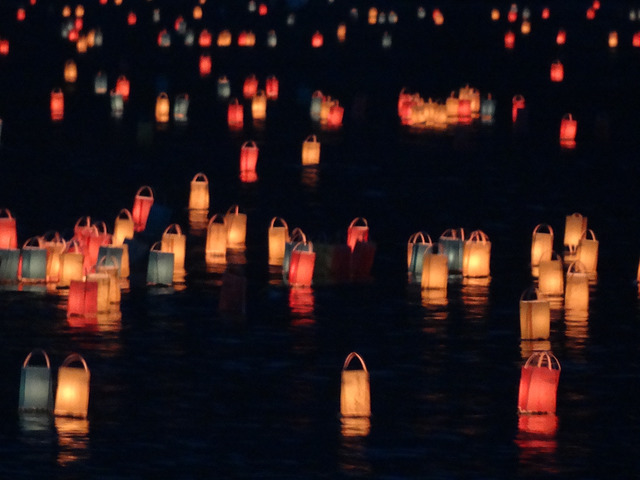Jul 30, 2018
Understanding Japan: What is Obon?
For many foreigners working in Japan, Obon is a great time, as most companies close for a bit of a summer holiday; it gives us a chance to hit the beach, travel, or just hang out at home glued to the air conditioner. In fact, many Japanese see it as a similar way, as Obon is of Japan’s three major holidays (including Golden Week in April/May and the New Year celebrations). However, there is so much more to Obon than a few mid-summer days off.
What is Obon?
Having been celebrated for more than 500 years, Obon can be translated to The Lantern Festival or The Festival of the Dead. Also simply called ‘Bon’ (the ‘O’ is an honorific to be used in politeness), this Japanese-Buddhist celebration has become a time when families return to hometowns to gather and honor their ancestors.
It is said that Japanese are born into Shintoism, but die in Buddhism*, thanks to the latter religion’s belief in the afterlife, and Obon is a time of year that those that have passed on return to the family home from the spiritual plane to spend time with their loved ones.
How is it celebrated?
Obon celebrations take place in a variety of different times, with Eastern Japan’s centered around the Solar calendar on July 15; in Okinawa and much of Western China they celebrate Kyū Bon” (Old Bon) on the 15th day of the seventh month of the lunar calendar, and so differs each year; and the rest of the country around August 15, which is when the official celebrations take place.
Ways of celebrating Obon too differ depending on locality, but the three day festival almost always begins with the lighting of welcoming fires, or ‘mukaebi’. These may be small fires lit outside the home or a pathway of lanterns, lit to guide loved ones from the spirit world to the family alter.
In some areas it is felt that fire is not enough, and disposable chopsticks or matchsticks are inserted into eggplants or cucumbers to create cow- or horse-shaped figures for the spirits of their ancestors to ride on their journey.
Inside the homes fruit, rice, green tea, sake and special handmade sweets are offered at the family’s altar. This food shared with the dead upon ‘reunion’ is an attempt to treat the spirits as if they are still alive, and is called ‘ozen’ in Japanese.

Obon celebrations at Kyoto’s Daimonji festival
Throughout the Obon holiday families will visit cemeteries to clean gravestones, and on the final day yet more fire ceremonies are attended, with the intention of guiding the ancestral spirits back to the spirit world. These events may differ from place to place, with lanterns often floated down rivers or out to sea, and Kyoto’s Daimonji festival perhaps most impressive.
Bon Odori
Bon Odori (literally ‘lantern dancing’) festivals have their origins in the story of Maha Maudgalyayana, a disciple of the Buddha, who used his powers to look upon his deceased mother. Discovering she was suffering in the Realm of Hungry Ghosts he asked Buddha how his mother could be released. Buddha instructed him to make offerings to monks who had just completed their summer retreat, on the fifteenth day of the seventh month. Maha did so, and upon seeing his mother’s release, danced for joy.
To this day this dancing is replicated in festivals the length and breadth of the country, where huge communities gather, often wearing yukata summer kimono and geta wooden sandals, and perform orchestrated – though relatively simple – dance routines.
The dances generally take place around a ‘yagura‘ raised platform from where performers sing and play traditional instruments. The dancers move in a large circle around the yagura, simultaneously stepping and clapping as they do so, the sound of wooden sandals clacking on the ground being perhaps one of the most evocative aspects of the festival.
The dances themselves vary greatly depending on location, and there are tutorials all over YouTube, but if you want to get involved, it’s best to just turn up, watch what everyone else is doing, and follow their lead.
By Mark Guthrie
*In modern times this phrase is altered to add that they are married into Christianity, a reflection on the recent popularity of Christian style weddings in Japan, but that is another topic for another time.
Image: by Alex Hurst (CC BY-NC-SA 2.0) via flickr.com– Modified
Image by: J. M. W. Silver [Public Domain] via Wikimedia Commons
Image: by 佐野宇久井 (Own work) [CC BY-SA 3.0], via Wikimedia Commons




About the author